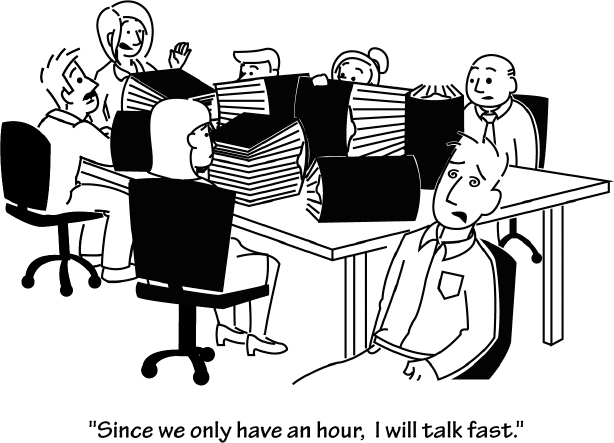2 Start with the End in Mind
Tradition: When preparing for a presentation, open up the last presentation and begin to retrofit. (Hello, search and replace!)
Breaking tradition: Start with the end in mind.
I fully support being as efficient as possible when it comes to presenting. I do not expect any salesperson or team to start preparing for each sales presentation with a blank screen. Having said this, I know it serves salespeople and teams well when they invest even just 15 or 20 minutes to strategize before customizing a PowerPoint presentation for the new situation.
You should approach the sales-presentation experience as a story—one with a clear beginning, a middle, and an end. You must design every sales presentation based on the client to whom you are presenting—and what that client is trying to accomplish.
The single biggest mistake we see sales teams make when preparing for sales presentations is cramming too many messages into too little time. While they intellectually understand that it doesn't make sense, it is a hard habit to break for a number of reasons:
- We are proud of all of our stuff—and we want them to see it all!

- We are concerned that the competition will show them something that we don't—and (God forbid) they will think we don't have it.
- We just don't feel complete unless we show them everything.
The major problem with presenting too much information ...
Get Make It All About Them: Winning Sales Presentations now with the O’Reilly learning platform.
O’Reilly members experience books, live events, courses curated by job role, and more from O’Reilly and nearly 200 top publishers.

